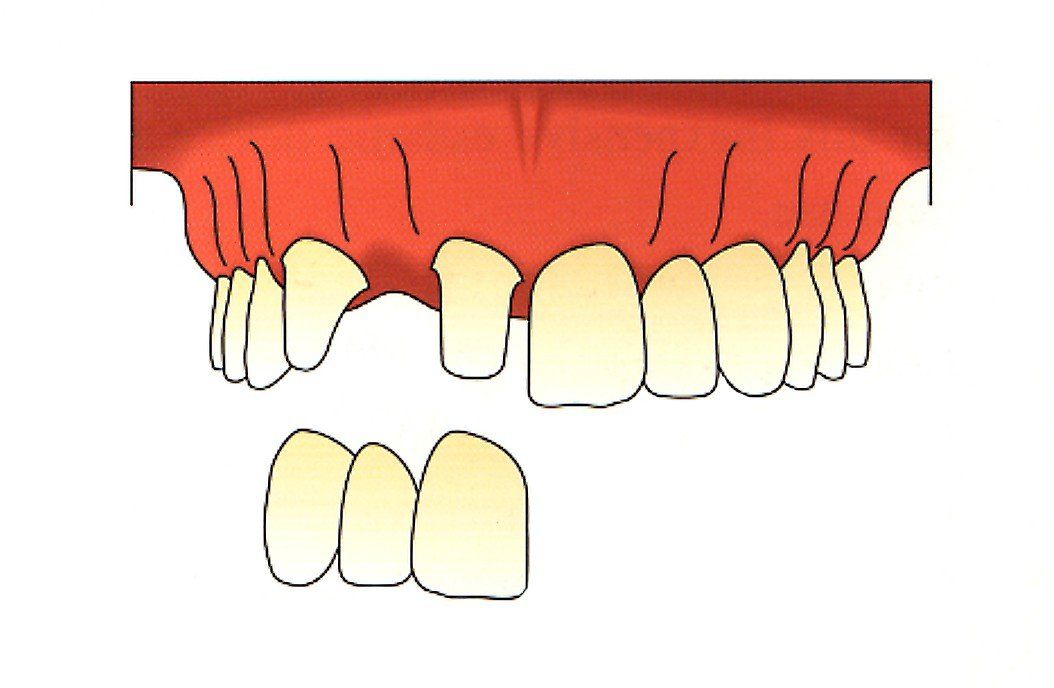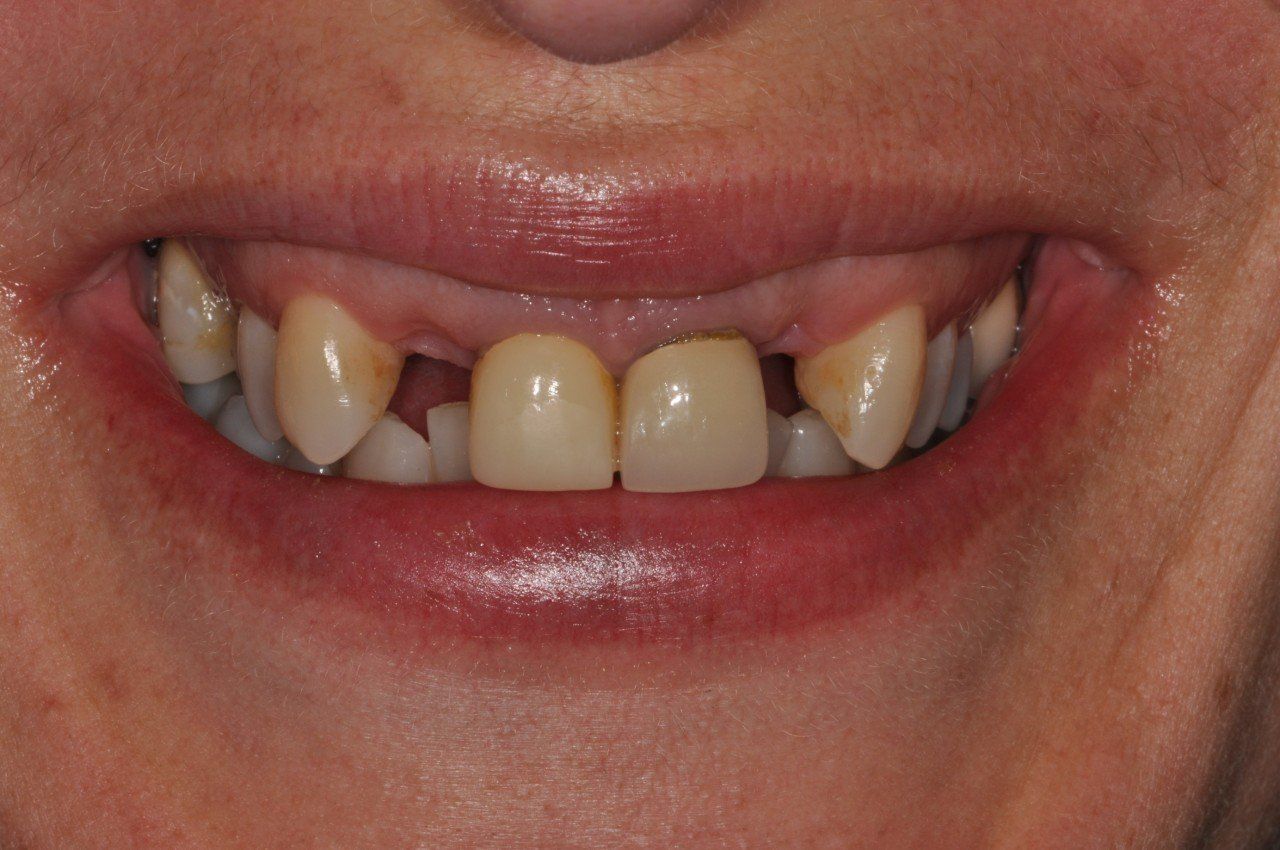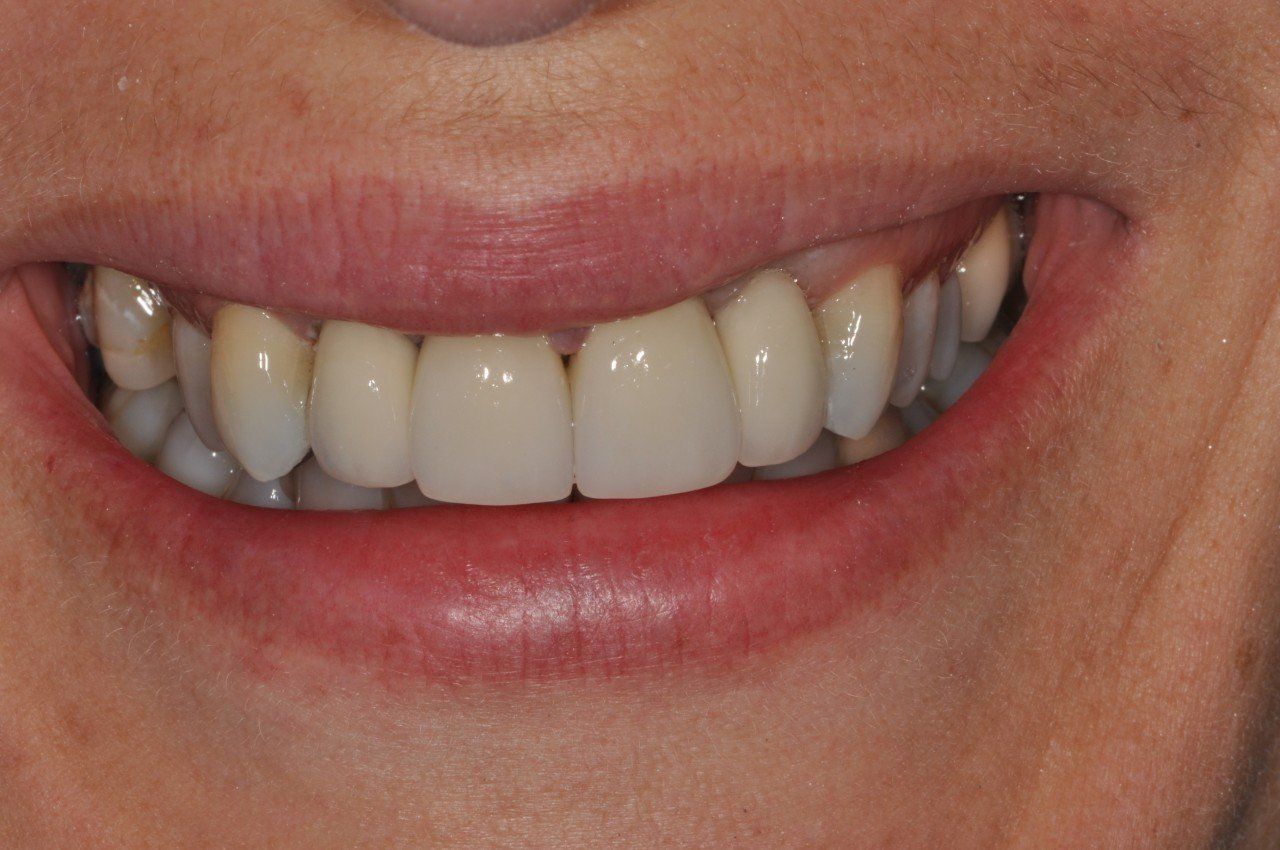FIXED BRIDGES
Fixed bridges are the tried and trusted, traditional way of replacing missing teeth.
What is a fixed bridge?
A full-coverage bridge consists of a false tooth that is firmly anchored to crowns constructed on the teeth on either side of the gap. Unlike a partial denture which can be removed, a bridge is firmly cemented in place and feels quite natural. The bridge may be made of porcelain, occasionally plastic, on a strong metal foundation. If the space is in the front of the mouth the bridge may be made entirely of porcelain.
Advantages
- Natural Aesthetics and Feel: Dental bridges are designed to match the colour, shape, and size of your natural teeth, providing a natural and attractive look and feel. Unlike a partial denture, there is no bulk in your mouth.
- Restored Function: Bridges restore the ability to bite and chew properly. They can improve your ability to speak clearly and enjoy a wider variety of foods.
- Stability: Bridges are fixed in place and are stable within the mouth. They do not require removal for cleaning or maintenance.
- Preservation of Tooth Alignment: When a tooth is lost, the neighbouring teeth may shift and become misaligned over time. Dental bridges prevent this from happening by filling the gap and maintaining the proper alignment of the remaining teeth.
- Faster Treatment Time: Compared to dental implant placement, which requires a surgical procedure and a healing period, dental bridges can be completed relatively quickly. The process typically involves preparing the supporting teeth, taking impressions, and fitting the bridge, resulting in a shorter overall treatment time.
Disadvantages
- Tooth Preparation: To support the bridge, the adjacent teeth need to be prepared by removing a layer of enamel to make space for the artificial teeth. This is an irreversible process.
- Aesthetics: If there is significant gum missing, it is difficult to replace this with fixed bridge work, while maintaining a bridge that is aesthetic and easy to clean.
- Maintenance Challenges: Cleaning and maintaining a dental bridge can be more challenging compared to natural teeth. Special flossing techniques or interdental brushes may be required to clean under and around the bridge to prevent the build-up of plaque and food particles.
- Potential for Bridge Failure: Poor oral hygiene or inadequate cleaning of the bridge can increase the risk of tooth decay and gum disease. If a supporting tooth underneath the bridge develops decay or other issues, it may compromise the integrity of the bridge.
- Affordability: Fixed bridgework is more expensive than a partial denture.
Longevity & Cost
Scientific studies show fixed bridge success rate of 87% @ 10 years and 69% @15 years.
The cost of a bridge is approximately $1600/unit, with the number of units depending on the design. It is important to discuss this with the dentist.
Replace 1 missing tooth (3 units) $4800
Replace 2 missing teeth (4-5 units) $6400 - $8000
What is involved?
- Firstly, we prepare the supporting teeth on either side of the gap. Each tooth is made into a peg shape, trimming away just enough tooth to make space for the bridge to fit over the top.
- An impression (mould) is taken of the prepared teeth and sent to the dental technician.
- We make a temporary bridge out of composite, which is bonded on with temporary glue. It is important to remember that this temporary bridge is designed to come off! Patients need to be careful flossing and avoid eating sticky foods so the bridge stays in place.
- The bridge is constructed in a laboratory by our technician.
- To get the best aesthetics, the technician will sometimes make a consultation appointment with the patient to choose the best colour, shape, and any characterisation.
- At the second appointment is 2-3 weeks later, the bridge is tried in and checked for fit and appearance. Any adjustments are made and once everyone is happy, the bridge is bonded into place.
Replacing two failed lateral incisors with a bridge
Discover Dental





